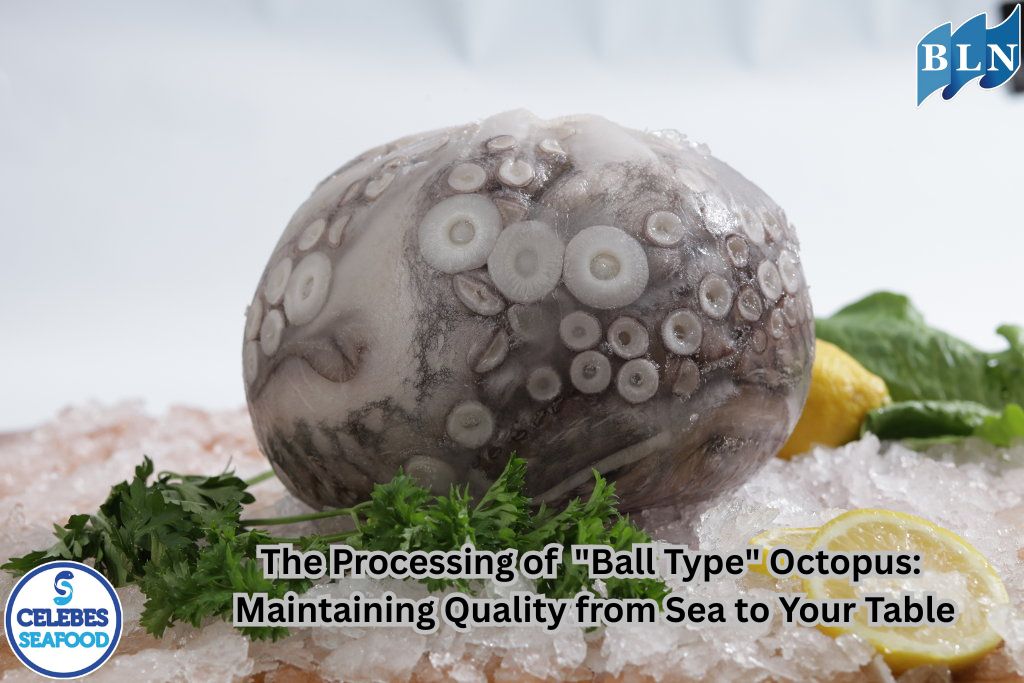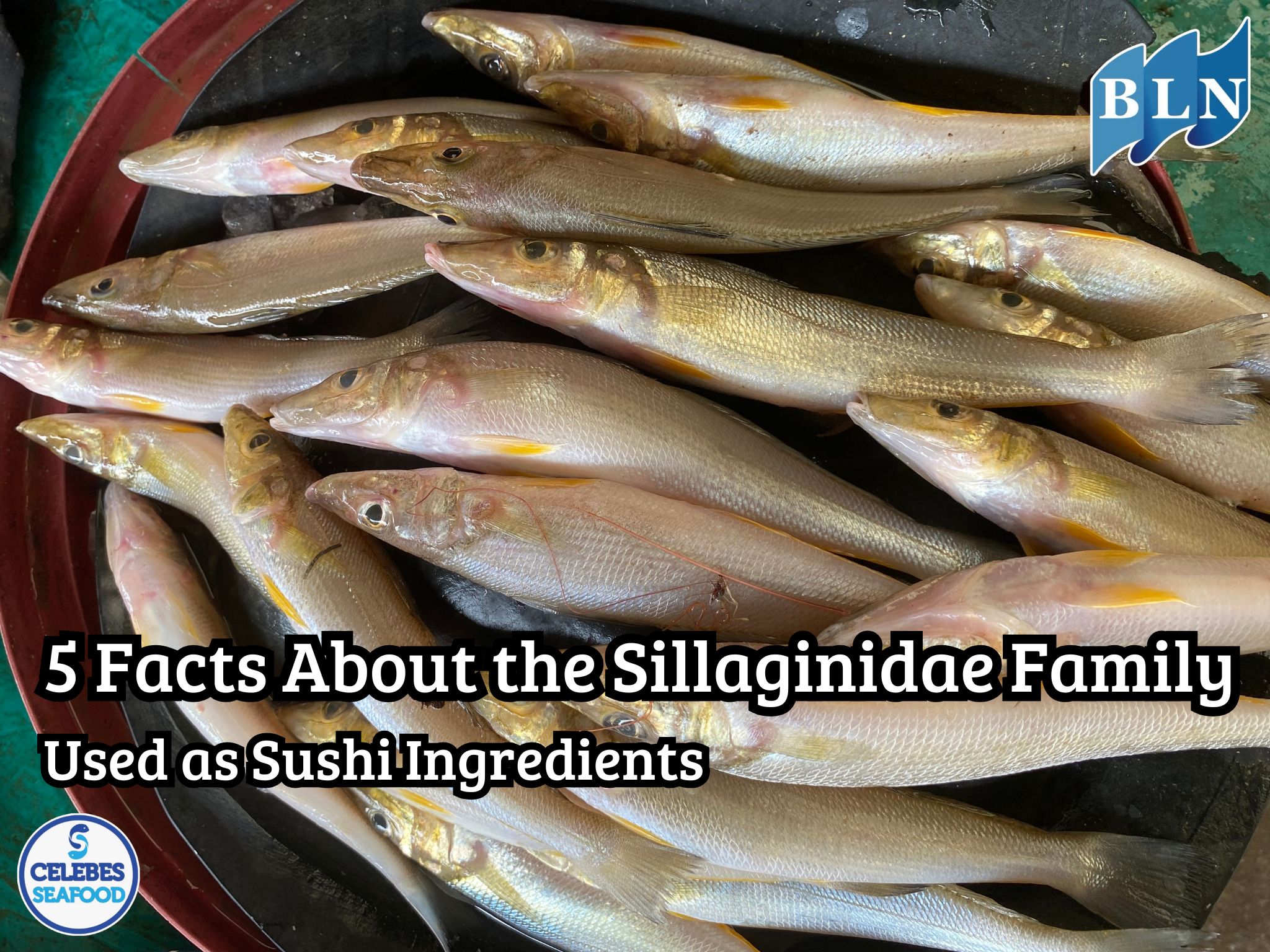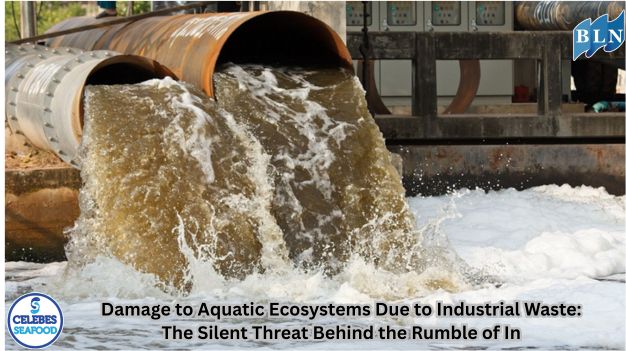The Processing of Ball Type Octopus: Maintaining Quality from Sea to Your Table
By. Tri - 31 May 2025
lautnusantara.com_ frozen octopus is a popular processed seafood product, favored for its practical shape and ease of preparation. Behind its convenient packaging lies a series of meticulous processing steps designed to ensure the product's quality, freshness, and safety are maintained until it reaches the consumer. The key to all these stages is maintaining an unbroken cold chain.
Forming "Ball Type" Octopus
After fresh octopus arrives at the processing facility, the crucial first step is thorough cleaning. The octopus is cleaned of dirt, ink, and unnecessary parts. After that, what distinguishes this product is the process of forming it into balls. The octopus is processed and shaped to resemble a ball. This shape not only simplifies packaging but also provides consistent portions and is visually appealing. This process requires skill and precision to ensure each "ball" has a uniform size and density.
Rapid Freezing with an Air Blast Freezer (ABF)
Once formed, the "ball type" octopus immediately enters the freezing stage. This process isn't arbitrary; the octopus is frozen using an Air Blast Freezer (ABF) machine. ABF is a highly efficient rapid freezing method. Inside the ABF, powerful cold air is blown around the product, drastically lowering its temperature in a short amount of time.
The temperature used in the ABF for "ball type" octopus ranges from -18°C to -35°C. At these extreme temperatures, freezing occurs quickly, usually taking 8 to 12 hours. Rapid freezing is crucial for several reasons:
- Prevents Large Ice Crystal Formation: Slow freezing can lead to the formation of large ice crystals within the octopus's tissues, which can damage cell structure and reduce the product's texture and quality when thawed. ABF minimizes the formation of these ice crystals.
- Locks in Freshness and Nutrients: By freezing rapidly, biological spoilage is halted, ensuring the octopus's flavor, aroma, and nutritional value remain locked in.
- Extends Shelf Life: These very low temperatures inhibit the growth of microorganisms, significantly extending the product's shelf life without the need for preservatives.
Storage in Cold Storage
After the freezing process is completed in the ABF, the solidly frozen "ball type" octopus is immediately transferred to cold storage or a cold warehouse. This is the final stage in maintaining the cold chain before the product is distributed. The temperature in cold storage is maintained much lower and more stable than during the initial freezing, ranging from -25°C to -40°C.
Storage at these very low temperatures ensures that the octopus remains perfectly frozen and does not experience temperature fluctuations that could affect its quality. This controlled cold storage environment becomes the "home" for the "ball type" octopus until it is ready for further packaging and shipment to various destinations, be it local markets or for export.
The Importance of a Maintained Cold Chain
All stages, from forming, freezing in the ABF, to storage in cold storage, are an integral part of the cold chain. An unbroken cold chain is the primary guarantee of quality for frozen fishery products. Any weak link, such as temperature fluctuations during transport or improper storage, can negatively impact the product's texture, taste, and even safety. Therefore, implementing strict operational standards and constant temperature monitoring are key in producing safe and high-quality "ball type" frozen octopus.
If you are interested in our Coral Trout Fillet Skin On, CORAL TROUT WGG WHOLE GILLED GUTTED, TOMATO COD WHOLE GILLED GUTTED please do not hesitate to contact us through email and/or whatsapp.
 for Octopuses Beyond Mere Preservation.jpg)



 Processed Products into Various Sambal and Abon as an Effort to Increase Added Value and Competitiveness of Local Fishery Products.jpg)


